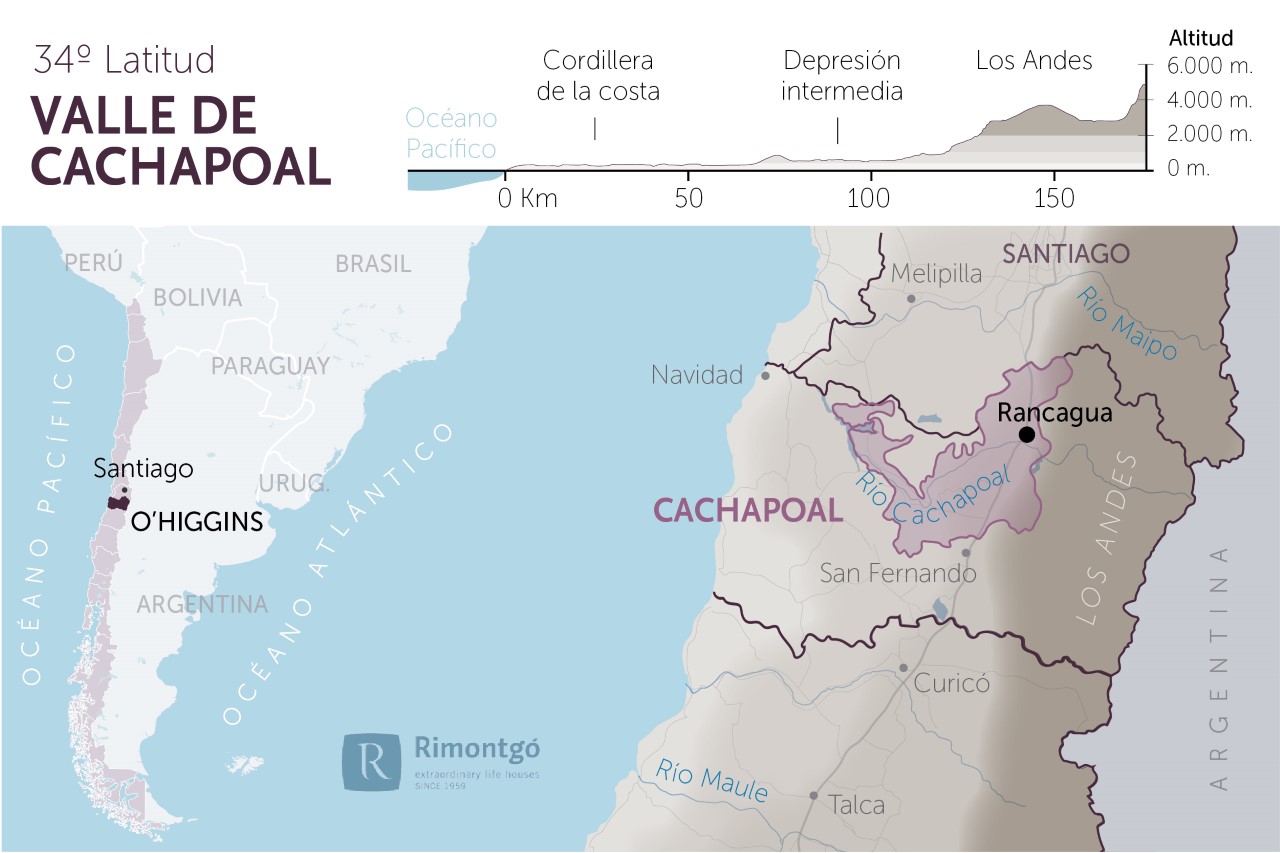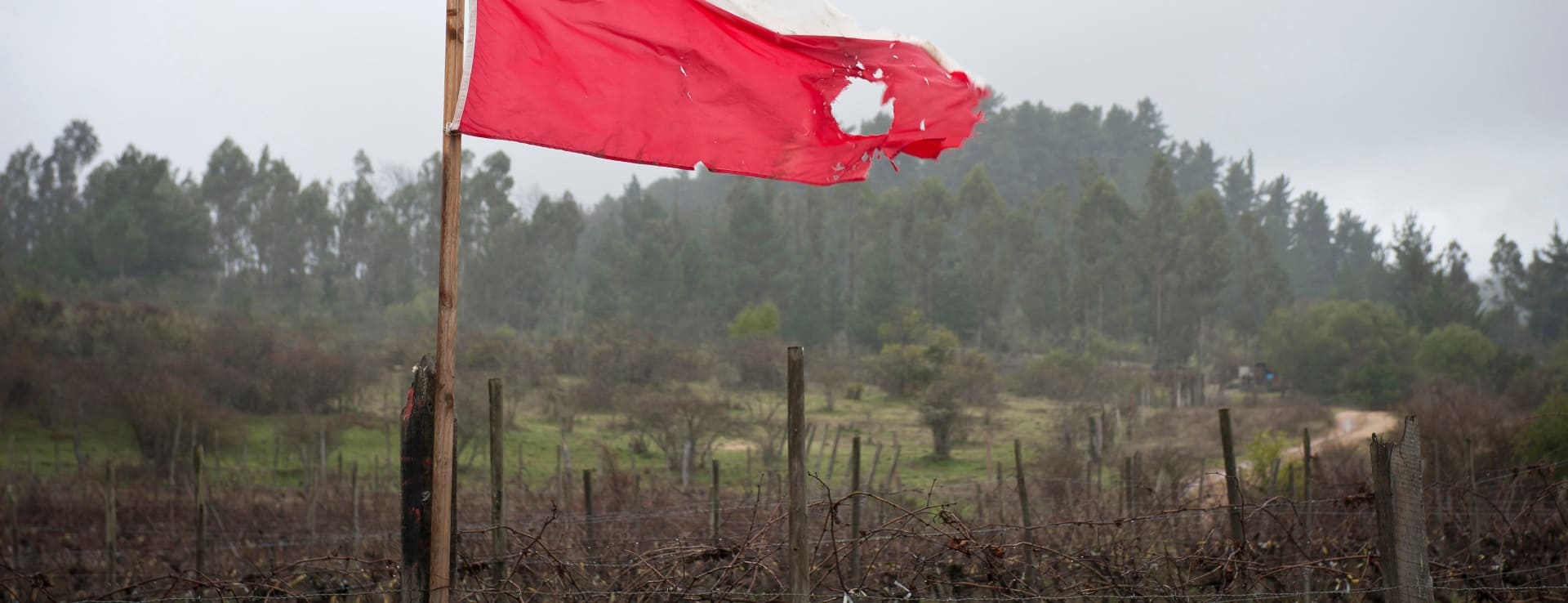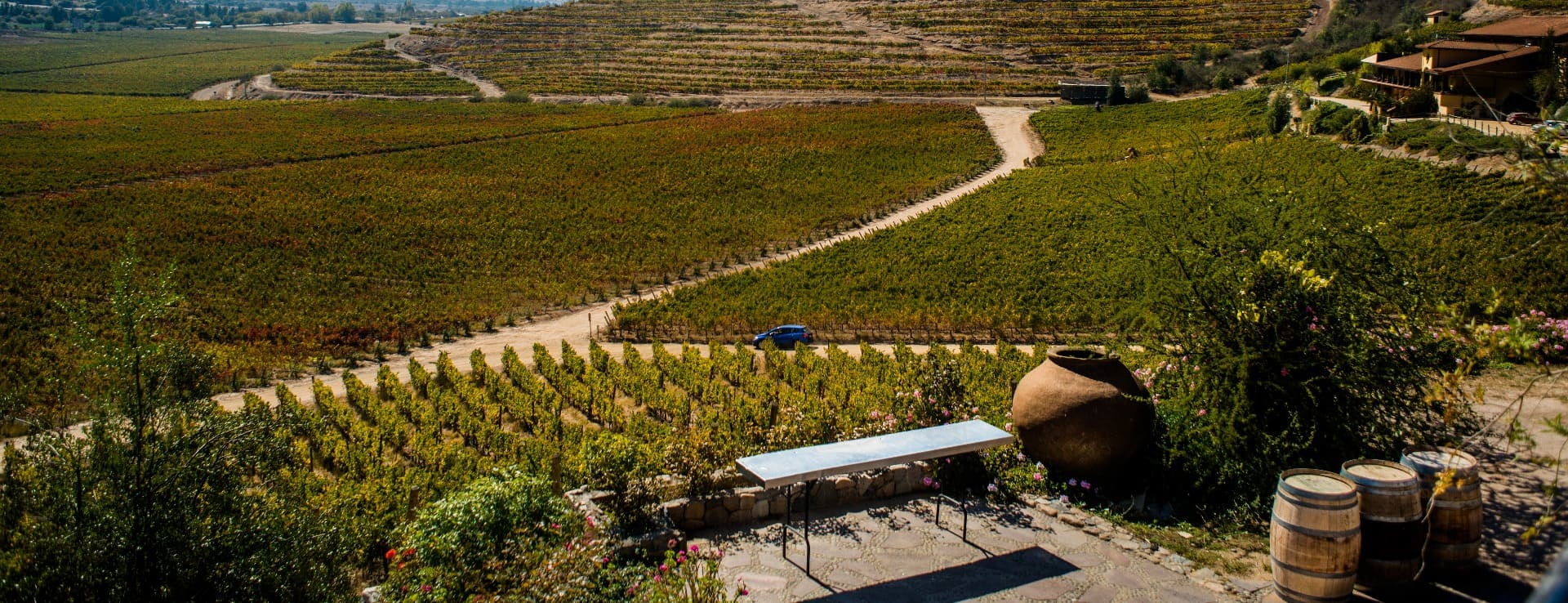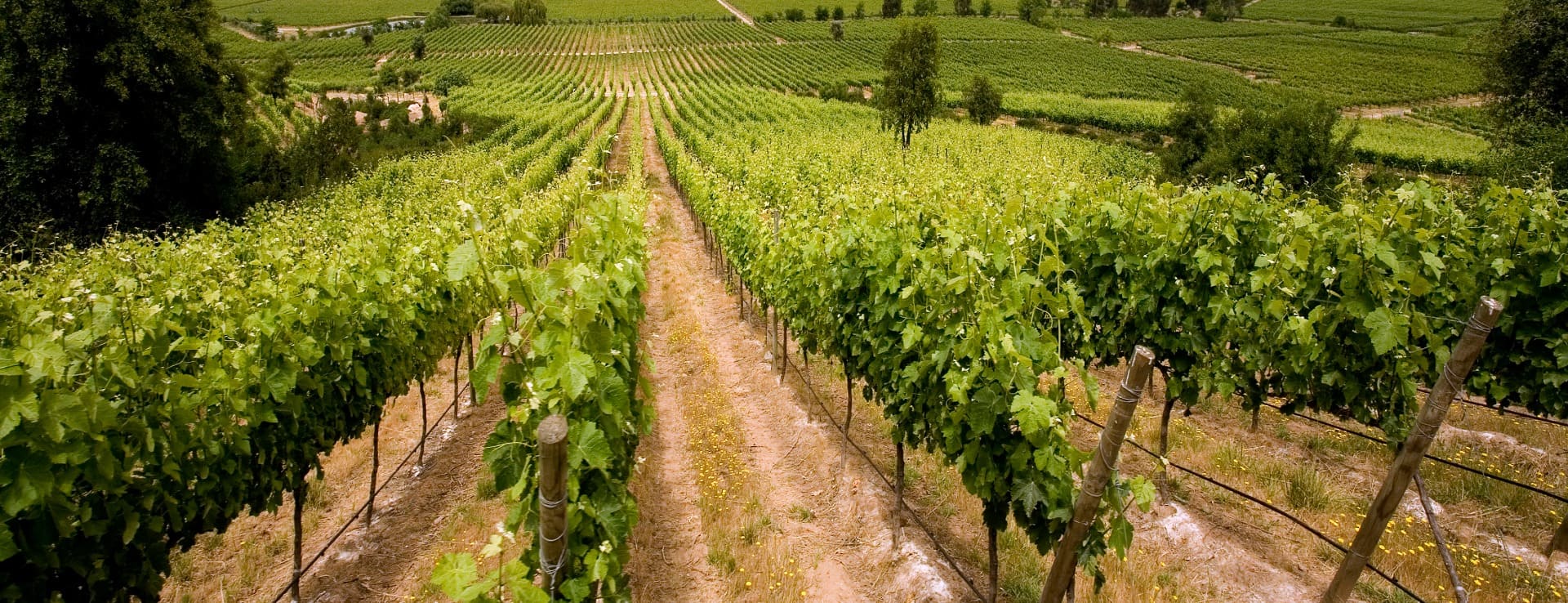Find your winery or vineyard
Infographic of the Denomination of Origin

Change to imperial units (ft2, ac, °F)Change to international units (m2, h, °C)
Total surface area:
12.700 ha31.382 ac
Altitude of the vineyards:
Min: 150m
Max: 600m
Min: 492ft
Max: 1.969ft
Temperature:
Min: 5º
Max: 29º
Min: 41°F
Max: 84°F
Yearly rainfall:
340 l/m232 l/ft2
Designation of origin Valle de Cachapoal
LOCATION AND HISTORY
The designation of origin Valle de Cachapoal, as well as the bordering designation of origin Valle de Colchagua are within the geographic are of Valle del Rapel. This designation of origin is within the O’Higgins region. The Cachapoal Valley is known among Chilean people with the nickname of “Cuenca de Rancagua”. The Costal range acts as a barrier which blocks the complete penetration of sea currents and fogs, creating a microclimate that is very suitable for the production of high-quality wine. Similarly, at the other end of the valley, the presence of the Andes causes thermal oscillations that affect the nature of the wines produced in the Cachapoal Valley, characterized by the softness of the tannins and a balance between acidity and sweetness.
SOILS
Soils in the designation of origin Valle de Cachapoal are abundant in mineral material that is deposited along different layers of sand with the presence of lime on occasion. This type of soil is very suitable for the cultivation of different vine, both red and white, in the case of Merlot or Carménère as well as Malbec, Chardonnay, Syrah, Cabernet Sauvignon or Sauvignon Blanc.
The Central Valley narrows in the Angostura de Paine, where the Andes and the Coastal Range are considerably closer. Between this and the Angostura de Pelequén is the Cuenca de Rancagua, in which the Cachapoal Valley is located, which shares characteristics with another nearby basin such as the Cuenca de Santiago: flat forms resulting from the transport of materials and sedimentation of glacier-fluvio-volcanic origin from the Andes, a product of alluvium, colluvium and volcanic remains.
The alluvial soils, south of Santiago, with the appearance of the Central Valley, acquire the typical climatic characteristics of Mediterranean areas with dry summers, finding the climax of development in the Maipo and Cachapoal valleys.
CLIMATE
The weather in the Cachapoal Valley responds to a Mediterranean model highly extended in the central area of Chile. The climate of this valley is characterized by a good thermal amplitude and moderate summer maximum temperatures, close to 28-29 degrees, which makes it perfect for varieties such as Cabernet Sauvignon. Winters are cold, ensuring a very good sprouting, with always dry springs. Being at a lower altitude, the risk of spring frosts decreases and the occurrence of rain close to harvest is also very low, being this type of soil very sought after to develop viticultural projects.
The ideal conditions to produce premium wines, if we are talking about character and complexity of wines, are found in the medium textured soils and high gravel content of its vineyards in the Maipo Valley and in the Alto Cachapoal Valley.
TYPE OF GRAPE
In the Cachapoal Valley almost 80% of the production is dedicated to red wines, including the varieties Carménère, Merlot and Cabernet Sauvignon. The different particular microclimates of the Valley allow the production of a wide variety of wines, from the cold climate in the foothills of the Andes to the warmer terrain around Lake Rapel. It should be taken into account that in the Rapel Valley where the designation of origin Cachapoal Valley is located, the union of the breeze from the Pacific and the soils of a clay nature makes it one of the areas with the highest production of red wine based on the Carménère grape variety.
Discover more wineries and vineyards for sale in these wine regions in Chile
Subscribe to our mailing list to receive news about wineries and vineyards.





